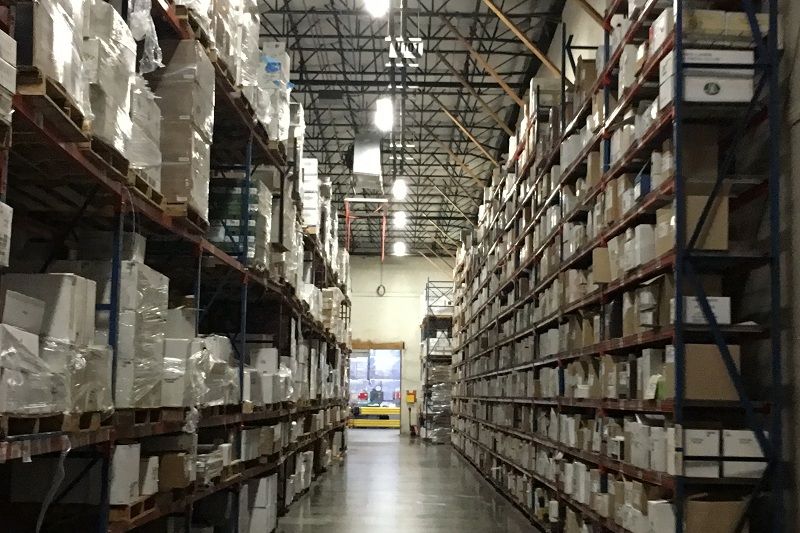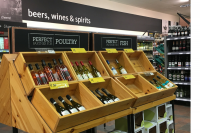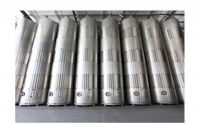Log in to your account
Lost password?Sales and Marketing
How to Manage Your Unsold Inventory
From small town wine shops and liquor stores to regional distributors and international importers – unsold inventory threatens a business’ survival. Learn some creative techniques and strategies for salvaging your investment and making the most of unsold inventory.
06/02/2025

Acquiring customers and amassing inventory are symptoms of a growing business, but when merchandise is mismanaged and product rotation stagnates, suddenly the entire operation stands on shaky ground. From small town wine shops and liquor stores to regional distributors and international importers – unsold inventory threatens the business' survival. When inventory begins to stagnate and stockpiles of merchandise begin to impede business and tie up investment, owners and managers are forced to take action.
Inventory can make up 50 percent or more of a business's current assets, and poor inventory tracking is a major factor in business failure. Not to mention that a GS1 US Survey found that the average inventory accuracy threshold for retail operations is only 63%. That means that not only does inventory represent a retail business’s largest investment of capital, but also that this investment tends to be poorly monitored and, as a result, mismanaged.
How do you know if you have inventory problems?
Inventory problems don’t typically happen overnight – instead, they creep up on you and take advantage of the fact that your attention is elsewhere. As with good friends and healthy finances, successful inventory requires an investment of your time. Leave it alone too long and you risk costly chaos.
Regardless of the product you're selling, any item that sits on the shelf too long increases costs and loses its value. It also ties up cash that could otherwise be spent on fast-selling items or on business-building tactics such as budgets for marketing and additional personnel. Products should be turning around in a timely manner – determined by your business market and model – and anything that overstays its welcome is something you need to actively sell and liquidate.
Striking that perfect balance of just enough and never too much is something that business owners chase after and never quite achieve. That’s the nature of retail. And while you can’t hope to snag the holy grail of fail-proof inventory, you can hope to frequently assess your position and take immediate action to make the most of any situation. Business owners should meticulously study their turnover and stock movements from month to month, in order to identify optimum inventory levels and take advantage of ordering times for specific brands.
Here’s a simple guide to recognizing when your inventory is off track:
Too much
Inventories are climbing faster than sales.
Inventory turnover rates are slower than you expected.
Cash flow is limited due to overstock.
Too little
Back orders are piling up.
Customers complain that products aren't available.
The real cost of unsold inventory
If all business owners recognized the true cost of their stagnant inventory, they'd be much more apt to act as soon as things begin backing up. Putting an exact price tag on unsold stock can be a challenge, particularly because the costs come from multiple sources.
Here are just a few of the real costs of unsold inventory:
Warehouse rent
Utility costs for maintaining proper storage conditions
Risk of loss, damage, theft, expiration, etc.
Opportunity costs
Diminished liquidity and cash flow
Increased taxes
(Some states tax inventory separately, therefore companies with large amounts of inventory pay more in taxes)
Strategies for Managing Unsold Inventory
1. Bundle
From toiletries to technology, happy meals to high-ticket items, companies big and small bundle products and services together at a discounted price as a strategy for increasing sales and sending inventory out the door.
Apply the buddy system to your products by pairing up high-demand products with the merchandise you're eager to move. Study past ordering trends to identify what products are moving quickly and search for patterns between beverages that are frequently purchased together. If you discover a trend or identify a particularly well-selling item, use it to your advantage by partnering it up with a relevant product from your unsold inventory. Place the two products in close proximity to each other your store floor or retail site, or consider offering a discount when the products are purchased together in a bundle.
Bundling products together is an excellent way to turn
your best sellers into your best asset.
For example, if you're having trouble moving a varietal wine from a lesser-known producer but that a big brand version of that same varietal is selling like crazy, bundle these items together and adjust the price to suit your needs. This strategy is an excellent way to spark interest in your older inventory while at the same time treating your clients to an unexpected deal.
Eager to bundle up your products? Before you begin, keep in mind that while bundling can be highly persuasive, it needs to be applied appropriately to avoid negative synergy. A 2013 research study, The Dynamic Effects of Bundling as a Product Strategy, found that customers are more likely to value (and therefore purchase) a product bundle when they are also offered the opportunity to buy each of the products individually. In a case study with Nintendo, a “mixed bundling scenario,” in which the consumer has the flexibility to choose how to buy, brought in 20% more revenue than when the consumer’s only option was to buy the bundled products together.
2. Targeted Promotions
When disappointing sales lead to mountains of unsold merchandise, promotions and discounts are a tried-and-true practice of wooing customers. After all, it’s better to shave a small bit off your margin now rather than writing off a large loss later. Customers are eager to get more bang for their buck, and the opportunity to snag a deal can be just enough to tip the scales in your favor.
Start by discounting the price of your slow-moving merchandise and if that doesn't work after a set period, try moving into the ever-compelling "door-buster deals." You may consider offering promotions for specific categories, or capitalizing on timely events such as national holidays, local celebrations, or even seasonal changes as an excuse to run a targeted promotion. While it may pain you to drop the price, keep in mind that the longer these products sit in stock, the more money they are costing your business.
3. Inventory Liquidations
Selling inventory in bulk to another retailer can be a quick and effective way of moving large amounts of merchandise in a hurry.
Investigate the liquor laws and distribution regulations that may prohibit the transfer of alcohol beverage inventory. In most cases, local law will likely prescribe what you can and cannot do in with your bulk alcohol beverage inventory. In most cases, alcohol beverage retailers are typically able to sell their stock to another retailer, often substantially discounted from wholesale, effecting that sale with detailed documentation as outlined in the local liquor code.
Liquidating large amounts of inventory can also be done through third-party entities that are in the business of buying stock or organizing auctions. Search your local listings for auctioneers with experience in the wine and alcohol sector or seek an online liquidator such as Wine-Liquidators and explore potential resale opportunities.
Yet another option for liquidating retail in a hurry is to reach out to a discount warehouse retail store willing to take on your excess inventory as a consignment. While such warehouse deals generally favor the retail store and slash your margin, it is a viable option to turnover your bulk inventory and recover some of your investment.
4. Return to Vendor
A rare option for maximizing your unsold inventory is to open communication with your vendor and explore any opportunity for returning your unsold inventory and sending it back to where it came from. While most vendors will shake their heads at the thought of such a thing, striking such a deal is not entirely unheard of.
Don’t except the warm and accommodating manner of a customer service agent, but know that it is sometimes possible to negotiate a deal in which you can recuperate some of the value of your unsold merchandise.
5. Donate to Charity
Donating unsold stock after having made every attempt to boost sales, can be the best way to make the most of an undesirable situation. Donating unsold inventory to a charitable organization can reward you in considerable tax deductions, however, there is some legal red tape to wade through in order to make sure you meet the necessary criteria.
In the first place, each state has its own set of laws governing the legality of alcohol donations to charitable organizations. These laws generally stipulate (1) the alcohol/ liquor license types that can donate alcohol for non-profit events and (2) the types of organizations that can receive such donations. In broad terms, the Internal Revenue Service (IRS) allows business to donate excess and obsolete inventory to charity if and when the charitable organization can use the item to meet the stated mission of the organization. Non-profit and charitable organizations may be able to make use of donated alcohol for events such as block party fundraisers, galas, wine auctions, etc.
If you’re interested in donating alcoholic beverages to a charitable organization, play strict attention to the laws and regulations governing your state as the rules are rarely straightforward. For example, Massachusetts law currently prohibits the donation of beer or spirits – though not wine, strangely enough - to charitable organizations, either or sale at auction, or serving at fundraising events.
Acquiring customers and amassing inventory are symptoms of a growing business, but when merchandise is mismanaged and product rotation stagnates, suddenly the entire operation stands on shaky ground. From small town wine shops and liquor stores to regional distributors and international importers – unsold inventory threatens the business' survival. When inventory begins to stagnate and stockpiles of merchandise begin to impede business and tie up investment, owners and managers are forced to take action.
Inventory can make up 50 percent or more of a business's current assets, and poor inventory tracking is a major factor in business failure. Not to mention that a GS1 US Survey found that the average inventory accuracy threshold for retail operations is only 63%. That means that not only does inventory represent a retail business’s largest investment of capital, but also that this investment tends to be poorly monitored and, as a result, mismanaged.
















